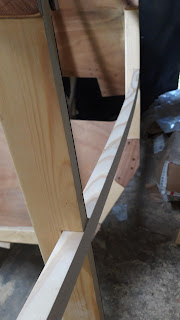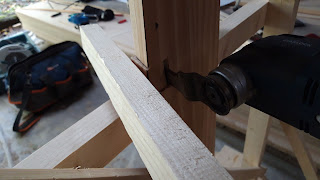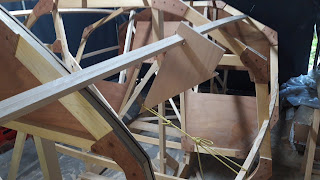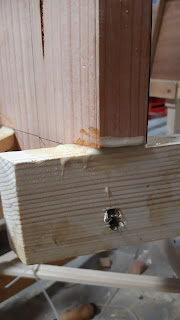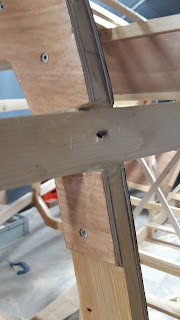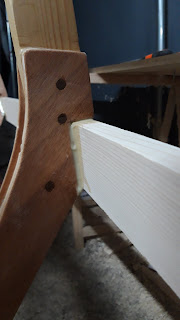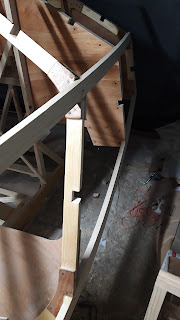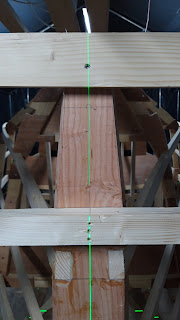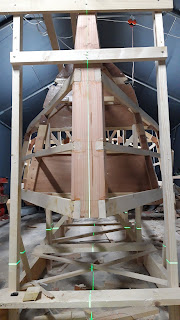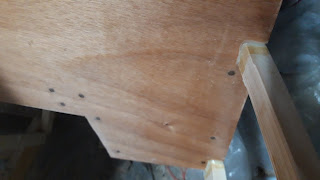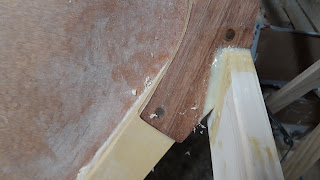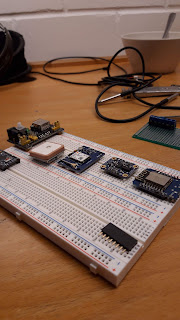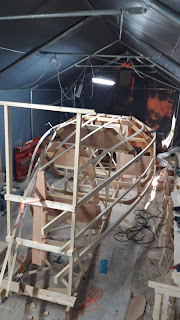I roughed out the bevels using a power plane and finished up using a hand belt sander. It is not all done yet, some fine tuning is to be expected before I permanently affix the plating.
I used a straight piece of board to check the surfaces while bevelling the longitudinals. After a few iterations the sides are ready for fitting the plating. In the picture below frame B with the curved side futtock. the additional 3mm in the centre makes for a nicely flowing curvature of the hull in this spot.
Fitting the large sheets of plywood was a bit fiddly by my lonesome, but quite manageable. I fitted one side, cut out the shape, checked that it fits the other side (should be symmetrical) and cut an exact copy for the other side. The offcuts may be large enough for the waterline strake somewhere. The Designer claims they are, I'm not sure, they seem to just fit. Hard to say without the rest of the bevels at least roughed out.
It is now too cold to glue everything together, so I'll wait for more favourable conditions. I want to have the sides fully plated before trying to fit and glue in the remaining chine logs. They require large forces to bend and twist them into shape, especially around the bow section and it might be tricky to keep everything from shifting again. With the sides fastened, nothing will be able to move or twist anymore. The geometry as it is now is as good as I ever could wish for, so why risk ruining it.
Tot de volgende keer.






